TYR
-
Official Full Name
tyrosine
-
Overview
Nitrotyrosine is a product of tyrosine nitration mediated by reactive nitrogen species such as peroxynitrite anion and nitrogen dioxide. It is detected in large number of pathological conditions and is considered a marker of NO-dependent, reactive nitrogen species-induced nitrative stress. Nitrotyrosine is found in numerous disease-affected tissues, such as the cornea in keratoconus. Peroxynitrite and/or nitrative stress may participate in the pathogenesis of diabetes. -
Synonyms
H-3-NITRO-L-TYROSINE; Tyr(3'-NO2); 3-nitro-l-tyrosine; NO2-L.Tyrosine; H-TYR(3-NO2)-OH; H-M-NITRO-TYR-OH; L-Tyrosine, 3-nitro-;
- Recombinant Proteins
- Cell & Tissue Lysates
- Protein Pre-coupled Magnetic Beads
- Assay Kits
- Canis lupus familiaris (Dog) (Canis familiaris)
- Chicken
- Gallus gallus (Chicken)
- Human
- Mouse
- Mus musculus (Mouse)
- Oryzias latipes (Japanese rice fish) (Japanese killifish)
- Pelophylax nigromaculatus (Black-spotted frog) (Rana nigromaculata)
- Pig
- Rat
- Zebrafish
- E. coli
- E.coli
- E.coli expression system
- HEK293
- HEK293T
- In vitro E. coli expression system
- Mammalian Cell
- Mammalian cells
- Wheat Germ
- Yeast
- C
- His
- Myc
- DDK
- Flag
- GST
- His (Fc)
- Avi
- SUMO
- Myc|DDK
- N/A
- N
| Species | Cat.# | Product name | Source (Host) | Tag | Protein Length | Price |
|---|---|---|---|---|---|---|
| Human | TYR-222H | Recombinant Human Tyrosinase (Oculocutaneous Albinism IA) | E.coli | N/A |
|
|
| Human | TYR-220H | Recombinant Human Tyrosinase, GST-tagged | Wheat Germ | GST | ||
| Human | TYR-1869HCL | Recombinant Human TYR cell lysate | N/A |
|
||
| Human | TYR-2965H | Recombinant Human TYR Protein, MYC/DDK-tagged | HEK293 | Myc/DDK |
|
|
| Human | TYR-3641H | Recombinant Human TYR protein, His-SUMO-tagged | E.coli | His-SUMO | 19-377aa |
|
| Human | TYR-1016HFL | Recombinant Full Length Human TYR Protein, C-Flag-tagged | Mammalian cells | Flag |
|
|
| Human | TYR-238H | Recombinant Human TYR Protein, MYC/DDK-tagged, C13 and N15-labeled | HEK293 | C-Myc/DDK |
|
|
| Human | TYR-1551H | Recombinant Human TYR Protein (19-377 aa), His-tagged | Yeast | His | 19-377 aa |
|
| Human | TYR-2286H-B | Recombinant Human TYR Protein Pre-coupled Magnetic Beads | HEK293 |
|
||
| Human | TYR-2286H | Recombinant Human TYR Protein, His (Fc)-Avi-tagged | HEK293 | His (Fc)-Avi |
|
|
| Human | TYR-2655H | Recombinant Human TYR protein(281-360 aa), C-His-tagged | E. coli | C-His | 281-360 aa |
|
| Mouse | TYR-17673M | Recombinant Mouse TYR Protein | Mammalian Cell | His |
|
|
| Mouse | TYR-9798M | Recombinant Mouse TYR Protein, His (Fc)-Avi-tagged | HEK293 | His (Fc)-Avi |
|
|
| Mouse | TYR-9798M-B | Recombinant Mouse TYR Protein Pre-coupled Magnetic Beads | HEK293 |
|
||
| Mouse | Tyr-6757M | Recombinant Mouse Tyr Protein, Myc/DDK-tagged | HEK293T | Myc/DDK |
|
|
| Mouse | Tyr-9032M | Recombinant Mouse Tyr Full Length Transmembrane protein, His-tagged | In vitro E. coli expression system | His | 19-533aa |
|
| Rat | Tyr-518R | Recombinant Rat Tyr Protein, His-tagged | E.coli | N-His | Ile233-Leu530 |
|
| Canis lupus familiaris (Dog) (Canis familiaris) | RFL13930CF | Recombinant Full Length Dog Tyrosinase(Tyr) Protein, His-Tagged | E.coli expression system | His | Full Length of Mature Protein (19-530) |
|
| Gallus gallus (Chicken) | RFL12883GF | Recombinant Full Length Chicken Tyrosinase(Tyr) Protein, His-Tagged | E.coli expression system | His | Full Length of Mature Protein (19-529) |
|
| Mus musculus (Mouse) | RFL12878MF | Recombinant Full Length Mouse Tyrosinase(Tyr) Protein, His-Tagged | E.coli expression system | His | Full Length of Mature Protein (19-533) |
|
| Oryzias latipes (Japanese rice fish) (Japanese killifish) | RFL5091OF | Recombinant Full Length Oryzias Latipes Tyrosinase(Tyr) Protein, His-Tagged | E.coli expression system | His | Full Length of Mature Protein (20-540) |
|
| Pelophylax nigromaculatus (Black-spotted frog) (Rana nigromaculata) | RFL5511PF | Recombinant Full Length Pelophylax Nigromaculatus Tyrosinase(Tyr) Protein, His-Tagged | E.coli expression system | His | Full Length of Mature Protein (20-532) |
|
| Zebrafish | TYR-8643Z | Recombinant Zebrafish TYR | Mammalian Cell | His |
|
|
| Pig | TYR-286P | Recombinant Pig TYR Protein, His-tagged | E.coli | His | Ala5~Asp245 |
|
| Chicken | TYR-5736C | Recombinant Chicken TYR | Mammalian Cell | His |
|
|
| Kit-0836 | Tyrosine Colorimetric Assay Kit | N/A |
|
- Background
- Quality Guarantee
- Case Study
- Involved Pathway
- Protein Function
- Interacting Protein
- TYR Related Articles
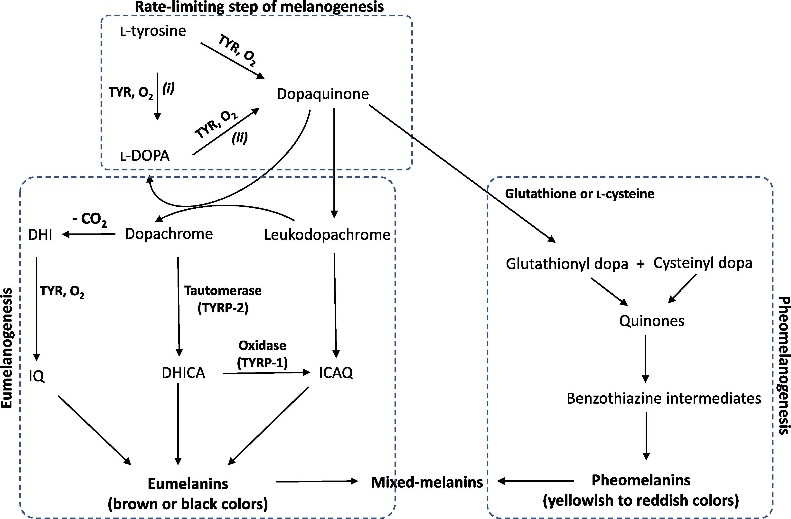
Fig1. Pathway of melanogenesis. (i) Monophenolase activity of tyrosinase. (ii) Diphenolase activity of tyrosinase. (Thanh-Nhat Pham, 2024)
What is TYR protein?
TYR (tyrosinase) gene is a protein coding gene which situated on the long arm of chromosome 11 at locus 11q14. Nitrotyrosine is a product of tyrosine nitration mediated by reactive nitrogen species such as peroxynitrite anion and nitrogen dioxide. It is detected in large number of pathological conditions and is considered a marker of NO-dependent, reactive nitrogen species-induced nitrative stress. Nitrotyrosine is found in numerous disease-affected tissues, such as the cornea in keratoconus. The TYR protein is consisted of 529 amino acids and its molecular mass is approximately 60.4 kDa.
What is the function of TYR protein?
This is a copper-containing oxidase that functions in the formation of pigments such as melanins and other polyphenolic compounds. Catalyzes the initial and rate limiting step in the cascade of reactions leading to melanin production from tyrosine. In addition to hydroxylating tyrosine to DOPA (3,4-dihydroxyphenylalanine), it also catalyzes the oxidation of DOPA to DOPA-quinone, and possibly the oxidation of DHI (5,6-dihydroxyindole) to indole-5,6 quinone
TYR Related Signaling Pathway
TYR protein is mainly involved in the signaling pathway of tyrosine metabolism, its main role is to catalyze the metabolism of tyrosine enzyme and tyrosine, and participate in the synthesis process of melanin. In this process, the Tyrosinase protein promotes melanin synthesis by oxidizing tyrosine, which in turn affects skin, hair and eye color. TYR is a rate-limiting enzyme that regulates the production of melanin. It influences the synthesis of melanin by catalyzing the oxidation of tyrosine
TYR Related Diseases
The Tyrosinase protein has been implicated ina variety of diseases, especially those related to melanin. These include: Vitiligo, Acanthosis nigricans, Pigmented disorders, Melanoma and other diseases such as certain hereditary eye diseases, cataracts, etc.
Bioapplications of TYR
The application of TYR protein mainly takes advantage of its role in regulating melanin production, and achieves whitening and anti-browning effects by inhibiting its activity. Cosmetics industry: TYR inhibitors can reduce skin pigmentation and help improve uneven skin tone. Pharmaceutical industry: Research and application of TYR inhibitors are also ongoing, especially in the treatment of pigment-related diseases such as melasma and freckles. Food and agricultural products: In order to prevent Browning of fruits, vegetables and other agricultural products during processing and storage, affecting appearance and nutritional value, inhibitors of Tyrosinase are also used as anti-browning compounds.
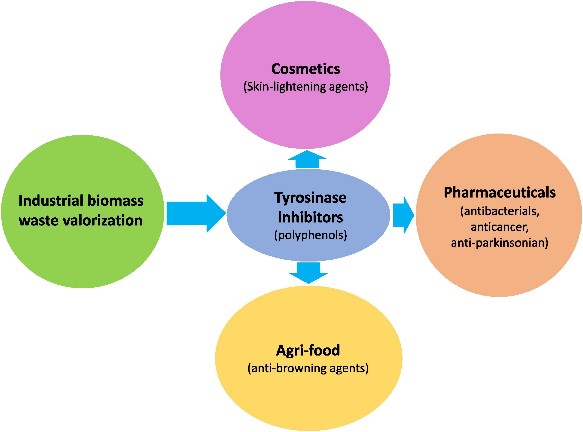
Fig2. Potential applications of natural tyrosinase inhibitors issued from biomass waste valorization. (Thanh-Nhat Pham, 2024)
High Purity
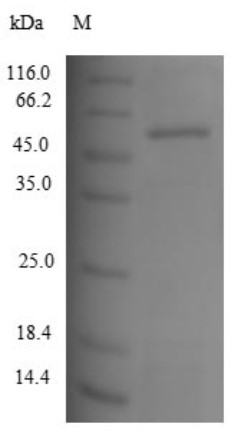
Fig1. SDS-PAGE (TYR-1551H) (PROTOCOL for western blot)
.
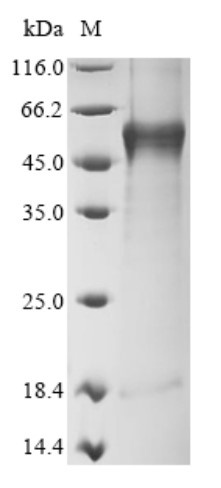
Fig2. SDS-PAGE (Tyr-9032M) (PROTOCOL for western blot)
Case study 1: Chen Hong, 2024
Epimedin B (EB) is one of the main flavonoid ingredients present in Epimedium brevicornum Maxim., a traditional herb widely used in China. The researchers's previous study showed that EB was a stronger inducer of melanogenesis and an activator of tyrosinase (TYR). However, the role of EB in melanogenesis and the mechanism underlying the regulation remain unclear.
Herein, as an extension to the previous investigation, they provide comprehensive evidence of EB-induced pigmentation in vivo and in vitro and elucidate the melanogenesis mechanism by assessing its effects on the TYR family of proteins (TYRs) in terms of expression, activity, and stability. The results showed that EB increased TYRs expression through microphthalmia-associated transcription factor-mediated p-Akt (referred to as protein kinase B (PKB))/glycogen synthase kinase 3β (GSK3β)/β-catenin, p-p70 S6 kinase cascades, and protein 38 (p38)/mitogen-activated protein (MAP) kinase (MAPK) and extracellular regulated protein kinases (ERK)/MAPK pathways. Furthermore, EB exerted repigmentation by stimulating TYR activity in hydroquinone- and N-phenylthiourea-induced TYR inhibitive models, including melanoma cells, zebrafish, and mice. Finally, EB ameliorated monobenzone-induced depigmentation in vitro and in vivo through the enhancement of TYRs stability by inhibiting TYR misfolding, TYR-related protein 1 formation, and retention in the endoplasmic reticulum and then by downregulating the ubiquitination and proteolysis processes.
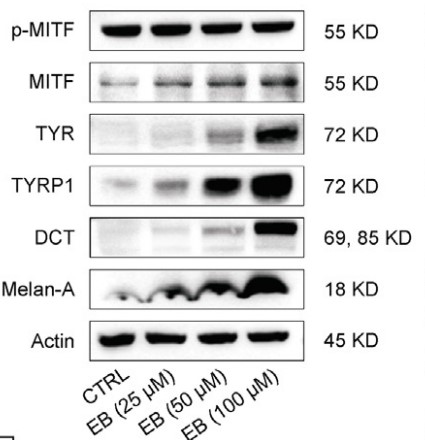
Fig1. The protein expression levels of p-MITF, MITF, TYR, TYR-related protein 1 (TYRP1), dopachrome tautomerase (DCT), and melanoma antigen (Melan-A) (72 h on B16F10 cells).
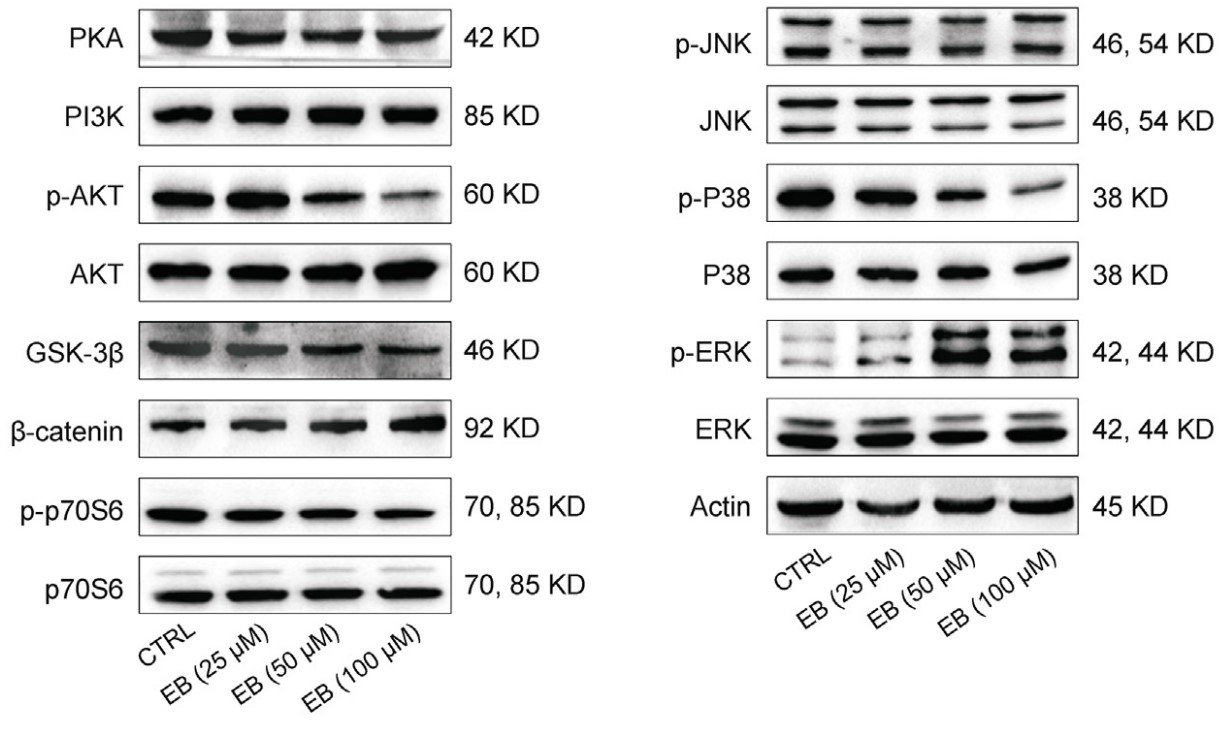
Case study 2: Zi-Yi Xia, 2024
Resina Draconis is a traditional Chinese medicine, with the in-depth research, its medicinal value in anti-tumor has been revealed. Loureirin A is extracted from Resina Draconis, however, research on the anti-tumor efficacy of Loureirin A is rare.
This research demonstrated that Loureirin A inhibited the proliferation of and caused G0/G1 cell cycle arrest in melanoma cells in a concentration-dependent manner. Further study showed that the melanin content and tyrosinase activity was enhanced after Loureirin A treatment, demonstrated that Loureirin A promoted melanoma cell differentiation. The activity and the expression of tyrosinase was measured. Taken together, this study demonstrated for the first time the anti-tumor effects of Loureirin A in melanoma cells, which provided a novel therapeutic strategy against melanoma.
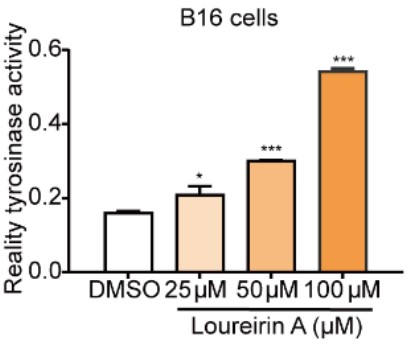
Fig3. Loureirin A promotes the differentiation of B16 cells. The tyrosinase activity in B16 cells.
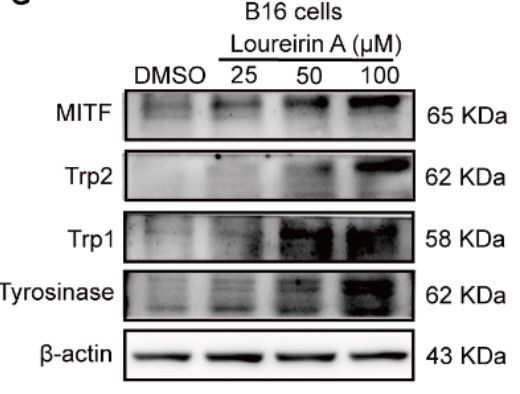
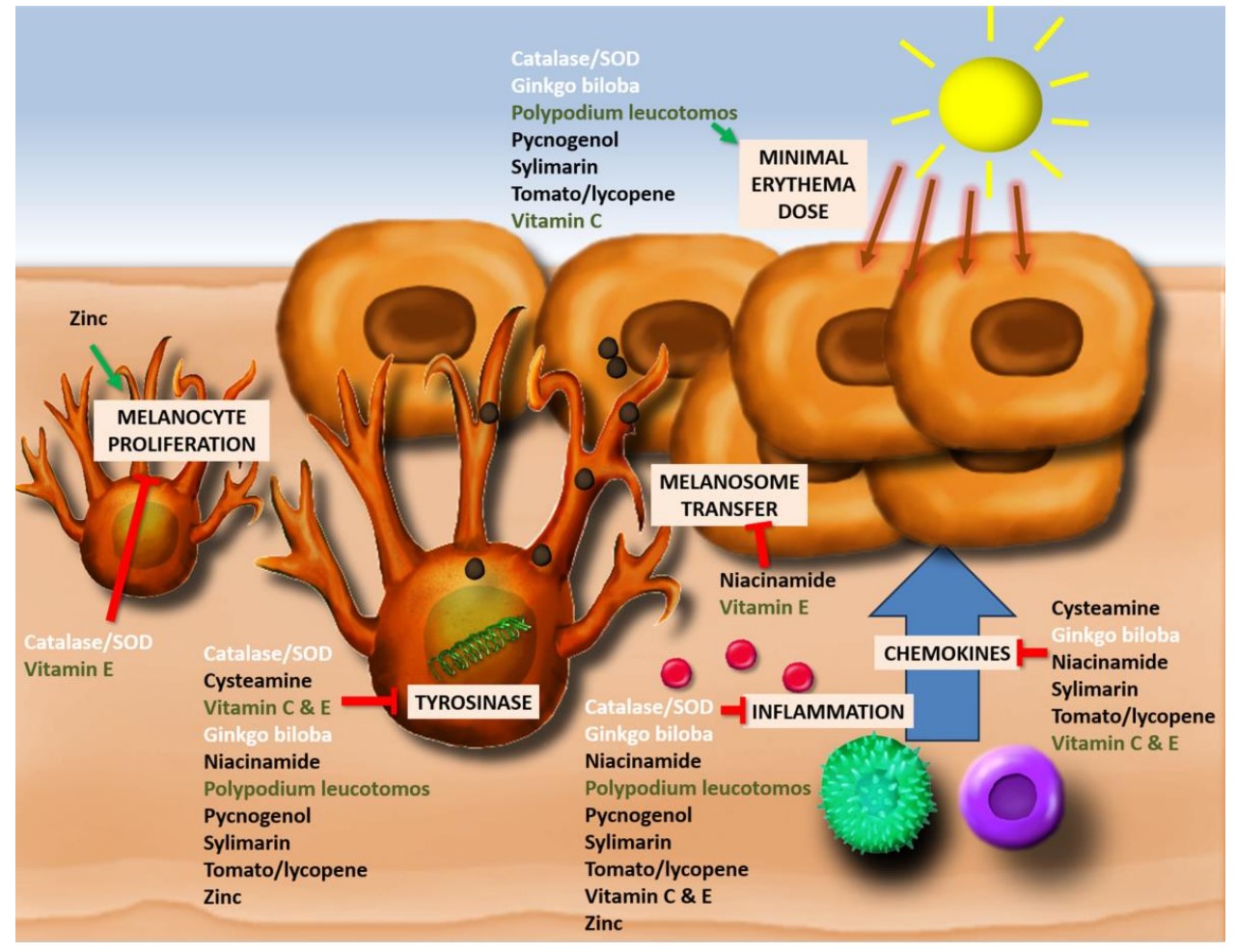
Fig1. Impact of antioxidants on melanogenesis, melanosome transfer, melanocyte proliferation, inflammation, chemokine production, and minimal erythema dose (MED). (Reinhart Speeckaert, 2023)
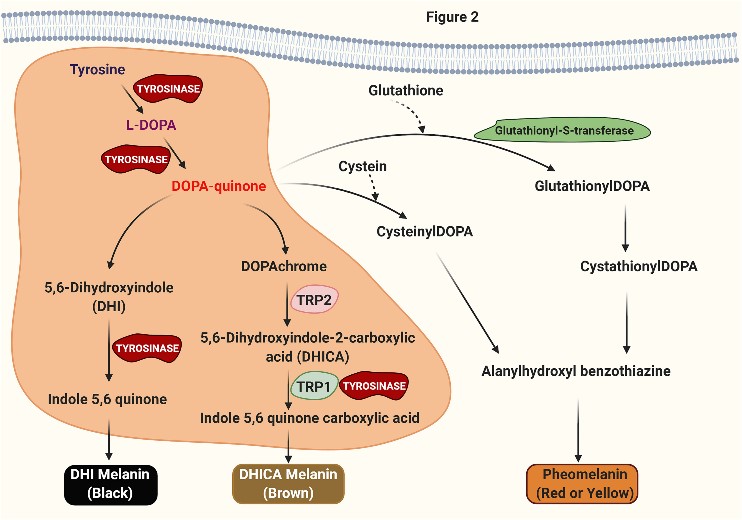
Fig2. Role of Tyrosinase in melanin synthesis: Conversion of L-tyrosine to L-DOPA is the rate-limiting step in melanin synthesis, and this step is catalyzed by the enzyme Tyrosinase. (Rajan Logesh, 2023)
TYR involved in several pathways and played different roles in them. We selected most pathways TYR participated on our site, such as Tyrosine metabolism, Riboflavin metabolism, Metabolic pathways, which may be useful for your reference. Also, other proteins which involved in the same pathway with TYR were listed below. Creative BioMart supplied nearly all the proteins listed, you can search them on our site.
| Pathway Name | Pathway Related Protein |
|---|---|
| Tyrosine metabolism | ALDH3B1;GOT2A;MAOB;TH;FAHD1;HPD;HGD;TAT;PNMT |
| Riboflavin metabolism | BLVRB;FLAD1;TYR;P22;RFK |
| Metabolic pathways | H2-KE6;SAT1A.2;ALG13;HK2;INPP1;NT5C1B;GPAT2;HLCS;CKMT2 |
| Melanogenesis | GNAI2;WNT9B;WNT7A;CAMK2D1;CALM3B;TYRP1;GNAI3;MAP2K2A;KITA |
TYR has several biochemical functions, for example, copper ion binding, monooxygenase activity, monophenol monooxygenase activity. Some of the functions are cooperated with other proteins, some of the functions could acted by TYR itself. We selected most functions TYR had, and list some proteins which have the same functions with TYR. You can find most of the proteins on our site.
| Function | Related Protein |
|---|---|
| copper ion binding | TRP53;SOD3A;SCO2;PAM;COMMD1;AOC3;HAMP;MT3;TP53 |
| monooxygenase activity | CYP11C1;CYP2AA7;CYP1C2;CYP2AA3;CYP2F2;CYP2K19;PTGIS;CYP2C19;CYP4F3 |
| monophenol monooxygenase activity | |
| protein binding | PKD1;GPR128;RPL27A;UBE2L3;FOXR1;CPSF4;RYR1;XPO7;AK8 |
| protein heterodimerization activity | PAFAH1B3;UGT1A1;ABTB2;AHR;BRAF;PRSS28;TFAP2E;CABYR;MEF2A |
| protein homodimerization activity | CLN6;ATF3;HEXB;DMRT1;ABAT;ERP29;ABP1;BMPR1A;PGCP |
TYR has direct interactions with proteins and molecules. Those interactions were detected by several methods such as yeast two hybrid, co-IP, pull-down and so on. We selected proteins and molecules interacted with TYR here. Most of them are supplied by our site. Hope this information will be useful for your research of TYR.
- Q&As
- Reviews
Q&As (6)
Ask a questionThere are no drugs that directly increase TYR protein levels, but there are drugs that can treat diseases that cause low TYR protein levels.
This protein may play a role in skin aging because it is involved in the production and metabolism of melanin. However, skin aging is also related to other factors, such as genetics, environment, etc.
Some whitening products claim to inhibit the TYR protein, thereby reducing the production of melanin. However, the efficacy and safety of these products have yet to be proven.
It is difficult to directly increase the level of TYR protein through diet because TYR protein is mainly genetically determined. However, the presence of copper in the diet can promote the function of the TYR protein.
TYR is not directly related to tanning. Tanning is a process by which skin cells produce melanin due to ultraviolet rays.
TYR protein may be involved in the occurrence and progression of skin cancer because it is involved in the production and metabolism of melanin.
Customer Reviews (3)
Write a reviewRepeatability is good, the results of multiple experiments are highly consistent, and the repeatability is particularly good.
High solubility, can be dissolved in various types of reagents, easy to operate.
Not easy to inactivate, tried a variety of experimental conditions, still active.
Ask a Question for All TYR Products
Required fields are marked with *
My Review for All TYR Products
Required fields are marked with *


